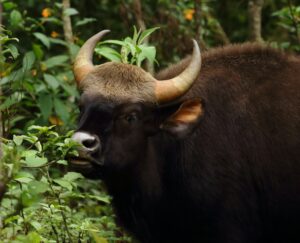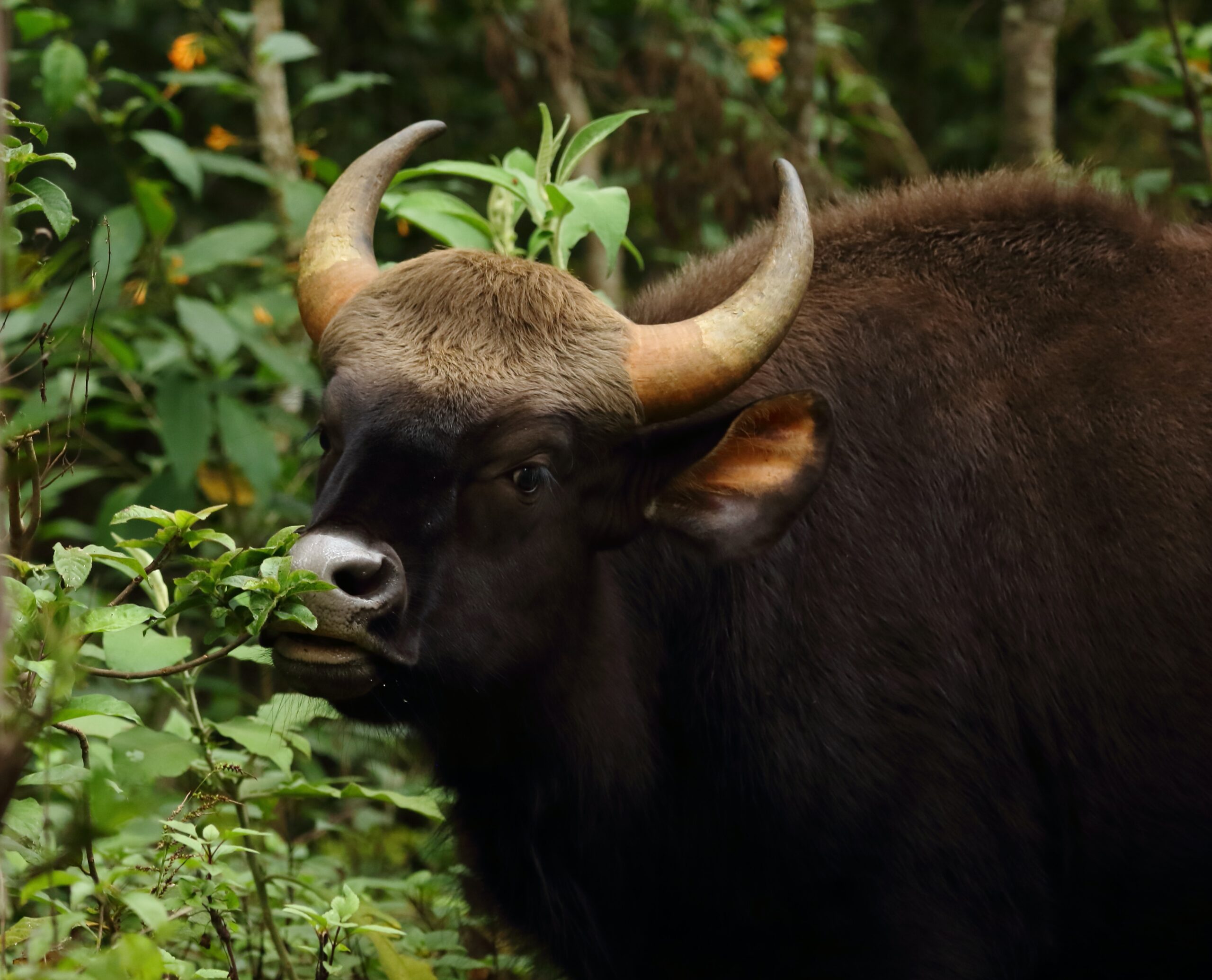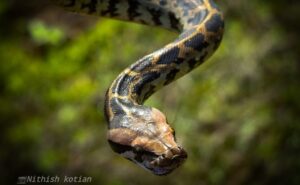

Bison represents raw power in symbolism. It also plays a significant role in Indian Folklores and mythology. Recently Indian Bison is in news for some different reasons- human-animal conflict.
Indian Bison (Bos gaurus) population is listed as Vulnerable under IUCN Red List of species with decreasing trend. Habitat Degradation, Poaching and Epidemic diseases, are responsible for the decline of its population globally.
In India, Bison is found in South-west, Central and North-eastern India. It is the state animal of Goa and Bihar.
Wild animals straying into human settlements ends badly for either humans or wildlife or both. Indian forests are home to Indian Bison since ancient times so what must be the cause for the Bison to step out of its home!
We can understand the process of Bison stepping out of forests by comparing it with the human migrations. As humans move out of their homes in search of food, better living conditions or avoid conflicting situations like drying water resources, degraded land, war, famine which make the home not liveable. Similarly, Bison is coming out of its homes in search of food(pastures), perennial water sources and alternative places to live.
What does this tell us?
It highlights the habitat destruction and habitat degradation of Indian forests.
Currently Indian forests can be described with-
All this is happening in recent past, at a very fast pace and on a larger scale than before and pushing wild animals to act out of nature.
Lets analyse few recent incidences involving Indian Bisons.
In Pune city where Gaur strayed in city is connected to Mulshi- Tamini forest areas. In Alipurduar, West Bengal where Bison strayed in city, is adjacent to Jaldapara National Park, In Kerala, Gaur ventured into a rubber plantation in Kanamala, Kottayam district very recently, is connected to buffer forest area of Periyar Tiger Researve and also to Ranni Forest Division.
In these incidences human lives are lost, sometimes Bison dies and sometimes the animal is rescued and sent back to the wild. The common factors in all these situations-
We must understand that there are no incidences of Bison attacking humans in forests. Authorities in such situations try to assemble rescue team, haphazardly which some time successfully save, or other time fail to control the situation. After each of such incidences, there are extreme responses of authorities, of media, of people where sympathy tend to tilt towards humans or towards animal depending on the ending.
What could help here is a Rescue Protocol, already in place for such incidences as pre-preparation. The protocol should clearly define the Line of Authority, Line of action and Rescue plan on ground level.
When we, the people expect the forest departments to take necessary steps to stop Bison entering human habitation should we not ensure that humans should not disturb and destruct Bison’s homes too?
Understanding someone makes us connect and unknown creates fear and awe. So, let’s try to understand Indian Bison.
Indian Bison lives from sea level up to at least 2,800 m MSL. Though it prefers lowlands, human pressures, disturbances, and conversion of most of the plains and other low-lying areas to croplands and habitation have caused the apparent preference of Gaur for hills.
Gaur was largely confined to evergreen, semi-evergreen, and moist deciduous forest but it also is found in dry deciduous forest areas at the periphery of its range.
The Gaur habitat are “characterized by –
(Steinmetz et al. 2008). Schaller (1967)
Indian Bison naturally have a shy nature and tend to run away at the first sign of human presence. In undisturbed areas, Gaur is mainly diurnal, but in areas of high human disturbance, it is reported to become nocturnal.
Severe forest fragmentation has increased conflict between the Indian Bison and humans in recent times. Our so called “Development “is actually “Destruction and Disturbance to most of other beings and indirectly harmful to us too.
So, let’s think over the possible solutions, both short term and long term for us to co-exist with Bisons.
Short term solutions–
Long term sustainable solutions–
Through Active restoration of forests and grasslands we can provide safe heaven to Indian Bison. It is the key to the finding solution of this human centered conflict, inflicted upon wildlife.
Invasions of exotic flora and fauna are considered as the biggest threats to wildlife conservation globally. The proliferation of invasive species has depleted the natural food of Indian Bison forcing them to raid fields and farms. Removal of invasive species is sustainable long-term conservation.
Land use change, allowing mining in forest areas, construction of roads, resorts, farms in forest areas fragments forests and push Bisons to move outside forests.
Corridors allow wild animals to move freely from one habiat area to another. Corridors which usually pass through a mosaic of human landscapes are degraded habitats with lots of disturbances thus making conflicts inevitable. Restoring corridors will help in minimizing conflicts.
We tend to initiate conservation plans late when it gets practically difficult and financially taxing to save an animal from brink of extinction. To maintain gaur populations into the future, long-term and large-scale planning are necessary.
We visit forests and love to see wild animals in their natural habitat. When Bison as a species, is so accommodating of humans in their homes, should not we do the same for him?
Humans are the problem here and Humans can be the solution to save wildlife and humans both.

She conceptualized FORREST to conserve, to Inspire and to connect people back to nature. Her interest lies in Habitat ecology. A poet by nature with a touch of the wild.

We plan to restore a forest of 20000 trees in the monsoon of July 2021! And we need your help to do that! Contribute saplings in Vruksh Khosh or donate Rs. 50 per sapling.